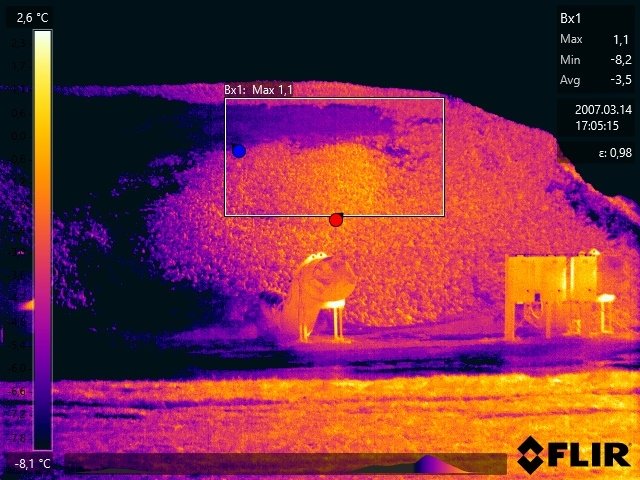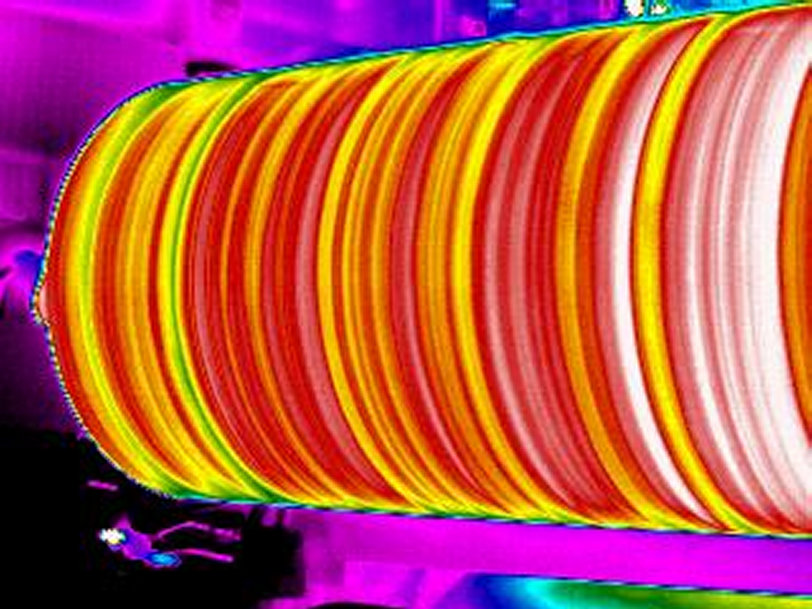Insights from the Field: Preventing Asset Failure, Production Line Shutdowns, and Fires Through Thermal Automation Cameras
The Insights from the Field series features insight from FLIR experts who recommend, deploy, and use thermal imaging technology every day. Join us as we discuss the diverse applications of thermal technology in security, safety, and equipment protection for critical infrastructure.

Thermal cameras are not only used to safeguard property and people but also to protect mission-critical equipment. At manufacturing plants, maintenance teams want to aggregate data to continually evaluate an asset’s health and know if it is about to fail. Production managers are keen to catch process anomalies that result in faulty products or packaging before these products leave the production line. Safety managers need to detect excessive heat buildup on fuel, hazardous material, and electrical components before combustion occurs and a fire breaks out. By deploying thermal cameras for condition monitoring, process control, and fire prevention applications, plant managers ensure maximum uptime and avoid catastrophic events.
Why Thermal?
Because temperature changes can be an early indicator of equipment deterioration, non-uniform temperature profiles on products, or a hotspot area, thermal automation cameras are a premier choice for plant managers. Radiometric thermal cameras yield a temperature value for every pixel in an image and clearly visualize the temperature differences of a surveyed area. Upon exceeding a specific temperature threshold, a thermal automation camera sends an alarm, or, if integrated with other control processes, triggers an action to deescalate the situation.
FLIR automation cameras in action
FLIR offers an array of radiometric thermal cameras that are highly effective automation solutions. Here are three examples of how FLIR automation cameras made a difference for critical facilities in the industrial sector.
Steel Mill and Condition Monitoring: Few equipment failures are as dangerous and damaging as a steel breakout at a steel mill, where a ladle or torpedo enclosure ruptures and pours out hundreds of tons of 1400°C (2552°F) molten iron onto the plant floor. Because hotspots can occur on this machinery in less than a minute, engineer service company ANT Automation provides its steel mill customers with a Continuous Infrared Analysis (CIRA) platform. The cornerstone of the CIRA solution is reliable thermal imaging from a FLIR automation camera, which monitors the entire surface of ladles and torpedoes; provides historical temperature data to distinguish between typical splashes and hotspots, and sends an alarm to personnel to act upon true hotspot detection. As a result, ANT Automation customers experience heightened equipment protection, cheaper insurance premiums, and greater peace of mind.
Paper Mill and Process Control: At paper mills, calendering—or the process of putting paper webs through hard pressure rollers to smooth the paper—is important. However, excess moisture can occur on the paper web between the rollers, damaging roll covers and causing downtime. One North America paper manufacturer experienced an average of 30 moisture events annually where each event equated to $100,000 in losses. To remedy the situation, the manufacturer turned to Eigen, an AI-enabled vision solution provider. Eigen provided a platform that featured FLIR automation cameras, an edge computing device, and analytics software. The FLIR cameras continuously monitor the paper web prior to it entering the calender machine and upon detection of cold streaks, trigger an unload alarm so that calendar stacks are opened and roll covers are cleaned. Eigen estimates its automation solution will result in 300 unloads for a total savings of $1.2 million.

Thermal monitoring solutions help avoid build-up on calender rolls and damage to the paper processing systems.
Waste Facility and Fire Prevention – Based in the town of Legnago in Northern Italy, Ecologica Tredi operates an 11,000 square meter facility that specializes in the recovery and treatment of special, hazardous, and non-hazardous waste. Should material combust and cause a fire at the plant, the consequences include unwanted pollutants released into the environment, damaged equipment, and lengthy business interruptions. To enhance workplace safety and meet regulation compliance, Ecologica Tredi partnered with Thermostick Elettrotecnica, who specializes in unconventional fire detection systems. Thermostick Elettrotecnica provided a comprehensive monitoring control and alarm system based on FLIR automation cameras. These FLIR cameras monitor work and storage areas and upon specified alarm events, can activate sprinklers or cannons. Thermostick Elettrotecnica also deployed a FLIR AX8 camera to survey material on the conveyor belt coming out of a shredder. Upon identifying abnormally high temperatures, the belt stops. After completing its audit of the facility, the Ministry of Interior said Ecologica Tredi was one of the most equipped for fire prevention.
These are just a few deployments that demonstrate how automation solutions, like the FLIR A400/A700 Smart Thermal Sensor camera, can be used to avoid unplanned outages, production line shutdowns, fires, and other “surprise” events that cause substantial disruptions and financial loss.
Deplpoyment recommendation
When evaluating how to implement thermal cameras for your automation application, there are several factors to consider. Here are a few recommendations to get you started.
- Select an Accurate Camera: For automation, accurate radiometric thermal images is key. Select a high-resolution radiometric thermal camera that yields sharp images and rich image detail. FLIR offers two optimal thermal detector arrays, 320 × 240 or 640 × 480, which provide up to ±2°C accuracy within temperature ranges of -40°C to 2000°C.
- Choose an Analytics Software: Easily integrate FLIR automation cameras with your preferred analytics software. Some of the software that FLIR cameras currently integrate with include Cognex Designer Pro, NI Software, Pleora Ebus, Teledyne, and Spinaker SDK.
- Determine Regions of Interest and Alarm Settings: Define what critical areas need to be surveyed for hotspots or temperature variances. When deploying FLIR cameras, you can select up to 10 regions of interest. Simply use the web-based configuration window on your mobile device or computer to select spots, draw boxes, or create custom areas. Create your alarm parameters as well as the desired response by defining the data acquisition output type.
- Integrate with Control Processes: For improved intervention, integrate thermal automation cameras with other control processes. To do this, ensure your automation camera is compliant with communication protocols such as GigE Vision, RTSP, MQTT, RESTful API, MODBUS TCP & Master, Ethernet IP, and FTP.

